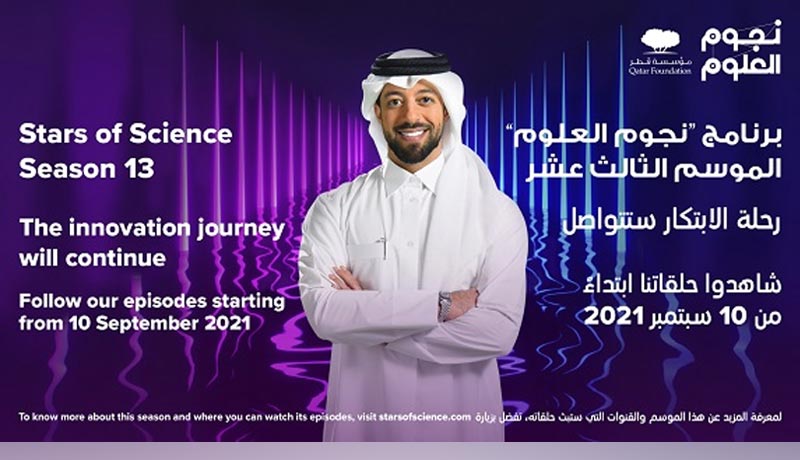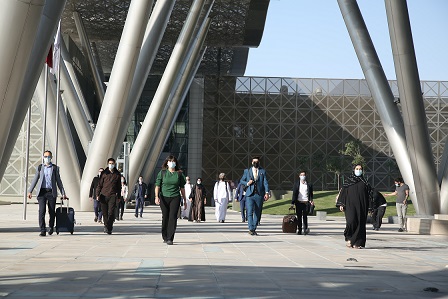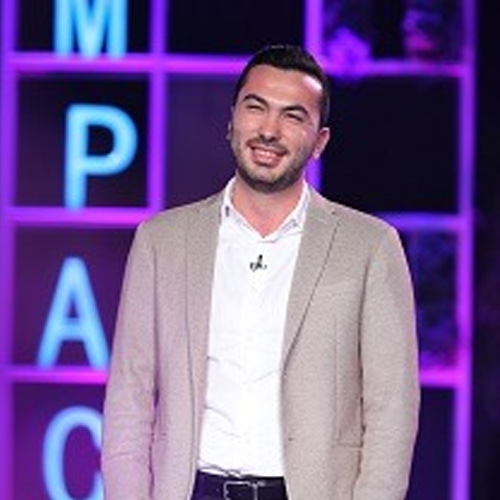
Stars of Science (SOS) season 13 featured the significance of STEM education for post-pandemic recovery. Demand for new technical developments is producing new career opportunities as businesses throughout the world slowly recovering from the devastation of the COVID-19 epidemic. Science, technology, engineering, and mathematics (STEM) skills are in high demand in the Middle East and North Africa (MENA).
Globally, the increased demand for these skillsets is outpacing the gradual shift in curriculum. As a result, many traditional jobs are being lost, while STEM is seen as the key to future innovation and employment creation.

This developing trend has spurred a new generation of young entrepreneurs and inventors to solve labor shortages and provide technical solutions to some of the region’s problems. Some of these inventions will be included in the future season of Stars of Science (SOS), Qatar Foundation’s edutainment TV show (QF).
Since its inception in 2009, the event has drawn innovators from all over the world, with 147 alumni from 18 Arab nations, many of whom have developed innovative products and established successful businesses throughout the Middle East and North Africa, as well as Europe, the Americas, and Eastern Asia. Members of the Stars of Science group serve the Arab world by demonstrating the process of addressing needs and solving issues through innovation, which is designed to stimulate societal progress.

On Season 5 (2013) of the show, Anwar Almojarkesh, a Syrian engineer, designed Braci, an assistive cushion for the hearing impaired. The pillow rouses the user when external noises, such as fire alarms, home security alarms, and doorbells, are detected using powerful sound recognition technology following Stars of Science, Almojarkesh founded Innovation Factory, a firm that focuses on hearing-impaired solutions, producing Braci as well as Soundalert – a product he developed based on Braci technology – and working on projects in the UK and the Gulf. He also created a blind money reader program for MADA (Qatar) and Oman and is currently working on a newer version with the Qatar Central Bank.
Jenan Al Shehab, a Kuwaiti engineer, came up with the idea for a gadget that informs doctors of a patient’s oncoming hypoglycemia coma while still in her first year of university. During Season 2, in 2010, she moved on to create her own company, Electrodis Tech, which specializes in manufacturing electromagnetic cells for use in public and private institutions around the Arab world.
Nizar Chelly, a Tunisian engineer, competed in Season 8 with his User-Friendly Modern Scanner. Beyond Stars of Science, Nizar founded “Robot Lab Tunisia,” a robotics club for kids that teaches them programming, 3D printing, and coding in the hopes of kindling their interest in STEM areas.
In Season 5, Jordanian electrical engineer Mahmoud Shattel created the Reyah-T, a vertical wind turbine. The green energy device is designed to generate power four times more efficiently than standard turbines, and it can even capture power from low-speed winds. His company, Taqetna, manufactures a variety of renewable energy items for the MENA region, including solar panels and solar water heaters.
Stars of Science is back for its 13th season, showcasing the eight bright contestants as they compete against time and each other in an all-new format. They’ll have to prove their technical competence as well as the viability of their concepts to a new panel of jury members, who will be announced on September 10 at the season premiere.
Stars of Science will air on seven regional stations and online every Friday and Saturday from September 10, 2021, until October 22, 2021. For channel and time information, please go to starsofscience.com.
